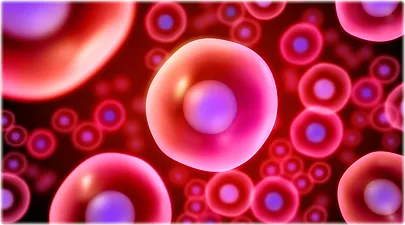Stem cells are the primary cells capable of reforming themselves through mitotic division and differentiating into specialized cells. These cells serve as repair system of the body and are present in all multicellular organisms.
Types of Stem Cells
Stem cells are of two types:
- Embryonic stem cells derived from embryo
- Adult stem cells derived from adults.
- Embryonic Stem Cells
Embryonic stem cells are derived from the inner cell mass of a blastocyst which is an early stage of the embryo. It takes about 4 to 5 days after fertilization to reach the blastocyst stage and it has about 30 to 50 cells. Embryonic stem cells have two important qualities:
- Self-renewal capacity
- Pluripotent nature, i.e. these cells are capable of differentiating into all types of cells in ectodermal, endodermal and mesodermal layers.
Because of these two qualities, the embryonic stem cells can be used therapeutically for regeneration or replacement of diseased or destroyed tissues. In fact, embryonic pluripotent stem cells are now cultured and a lot of research is going on to explore the possibility of using these cells in curing the disorders like diabetes
mellitus by cell replacement technique. But, ethical issues arise because the embryo has to be destroyed to collect the stem cells.
Stem cells from umbilical cord blood
Stem cells in umbilical cord blood are collected from the placenta or umbilical cord. Use of these stem cells for research and therapeutic purposes does not create any ethical issue because it does not endanger the life of the fetus or newborn. Because of vitality and easy availability, the umbilical cord blood stem cells are becoming a potent resource for transplant therapies. Nowadays, these stem cells are used to treat about 70 diseases and are used in many transplants worldwide.
2. Adult Stem Cells
Embryonic stem cells do not disappear after birth. But remain in the body as adult stem cells and play a role in repair of damaged tissues. However, their number becomes less. Adult stem cells are the undifferentiated multipotent progenitor cells found in growing children and adults. These are also known as somatic stem cells and are found everywhere in the body. These cells are capable of dividing and reforming the dying cells and regenerating the damaged tissues. So, these stem cells can also be used for research and therapeutic purposes.
Adult stem cells are collected from bone marrow. Two types of stem cells are present in bone marrow:
- Hemopoietic stem cells, which give rise to blood cells
- Bone marrow stromal cells, which can differentiate into cardiac and skeletal muscle cells.
Advantages of Stem Cells
Adult stem cells from bone marrow are used in bone marrow transplant to treat leukemia and other blood disorders since 30 years. Recently, it is known that these stem cells can develop into nerve cells, liver cells, skeletal muscle cells and cardiac muscle cells.
Recent discoveries also reveal that the stem cells are present in several tissues which include blood, blood vessels, skeletal muscle, liver, skin and brain. It is also found that these cells are capable of differentiating into multiple cell types. So, the cell-based therapy using stem cells may be possible to treat many diseases such as heart diseases, diabetes, Parkinson’s disease, Alzheimer’s disease, spinal cord injury, stroke and rheumatoid arthritis.


 (53 votes, average: 4.34 out of 5)
(53 votes, average: 4.34 out of 5)